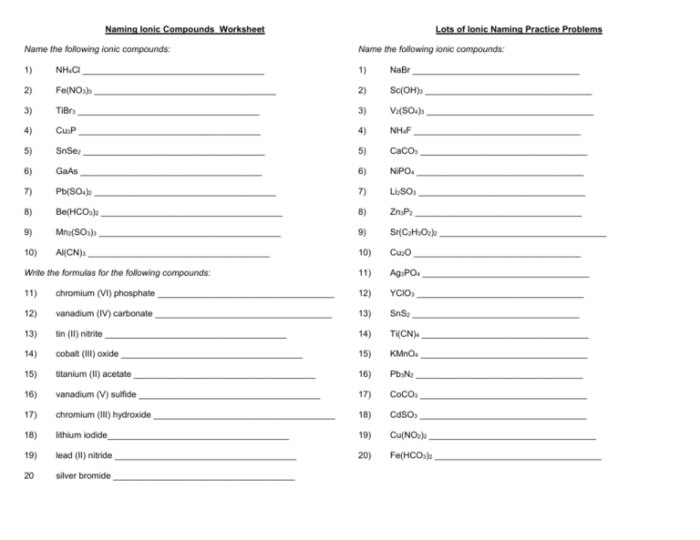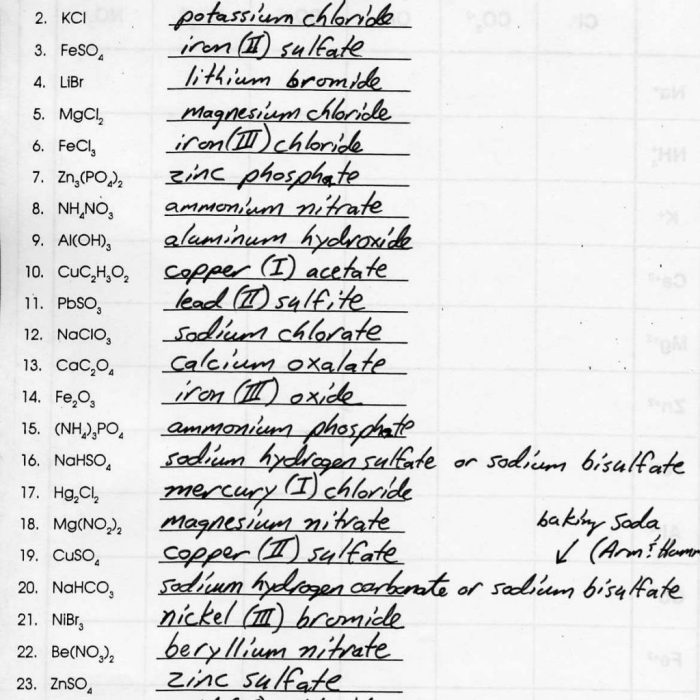Welcome to the comprehensive naming of ionic compounds worksheet! This guide will provide a deep dive into the fascinating world of ionic bonding, empowering you with the knowledge and skills to confidently name ionic compounds. Embark on an engaging journey through the basics of ionic bonding, step-by-step naming processes, and interactive worksheets designed to enhance your understanding.
As we delve into the intricacies of ionic compounds, we will explore the different types, including binary ionic compounds, polyatomic ions, and transition metal ions. Along the way, we will dispel common misconceptions and address potential pitfalls to ensure a thorough grasp of this fundamental chemical concept.
1. Naming Ionic Compounds
A Comprehensive Guide

Ionic bonding is a chemical bond that forms between two oppositely charged ions. An ionic compound is a compound composed of positive and negative ions that are held together by electrostatic forces. The naming of ionic compounds follows a set of rules that depend on the charges of the ions involved.
To name an ionic compound, first identify the positive ion (cation) and the negative ion (anion). The cation is typically a metal, and the anion is typically a nonmetal. The name of the cation is simply the name of the metal.
The name of the anion is the root of the nonmetal’s name followed by the suffix “-ide”.
For example, the ionic compound NaCl is composed of the sodium cation (Na+) and the chloride anion (Cl-). The name of the compound is sodium chloride.
Types of Ionic Compounds, Naming of ionic compounds worksheet
There are three main types of ionic compounds:
- Binary ionic compoundsare composed of a metal and a nonmetal.
- Polyatomic ionsare groups of atoms that have a net charge. They can be either positive or negative.
- Transition metal ionsare metal ions that can have multiple charges. They are named using Roman numerals to indicate their charge.
Key Questions Answered: Naming Of Ionic Compounds Worksheet
What is the difference between a cation and an anion?
A cation is a positively charged ion, while an anion is a negatively charged ion.
How do I determine the charge of an ion?
The charge of an ion can be determined by the position of the element on the periodic table. For example, alkali metals (Group 1) form cations with a charge of +1, while halogens (Group 17) form anions with a charge of -1.
What are some common mistakes made when naming ionic compounds?
Some common mistakes include using the wrong charge for the ion, reversing the order of the ions, or omitting the Roman numeral for transition metal ions.

